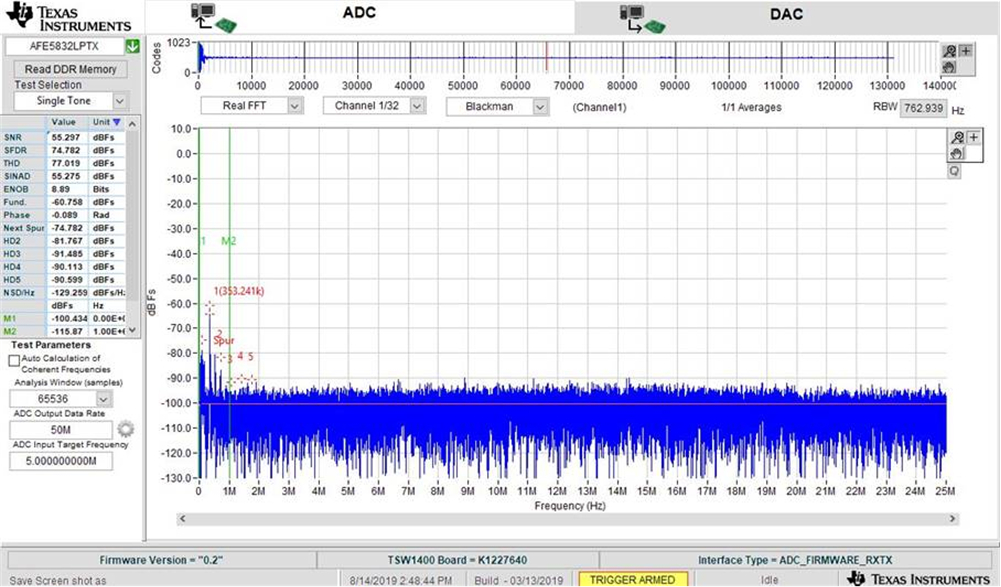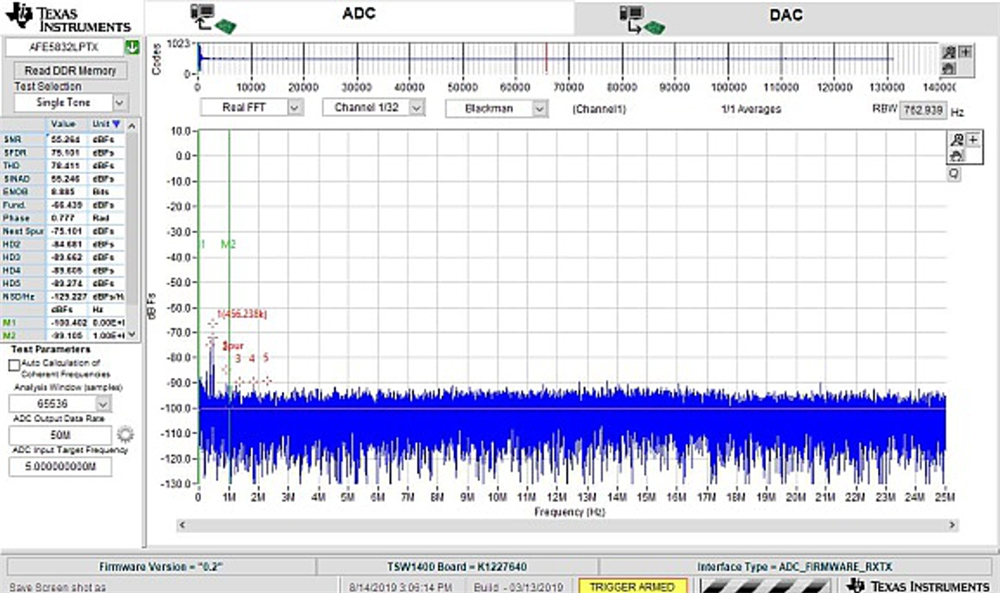SLOA284A january 2020 – may 2023 AFE5832 , AFE5832LP , ISO7741 , ISOW7841 , LM25037 , LM25180 , LM5180 , LM5181 , LM5181-Q1 , TX7316 , TX7332
3.4 Noise Measurement
Figure 3-9 and Figure 3-10 show the FFT of the received data collected from TX + RX setup consisting of TX7332 as transmit device and AFE5832LP as receive device. Figure 3-9 shows the noise with ideal bench supply and Figure 3-10 shows the noise with High Voltage supply generated by this design. The SNR in case of bench power supply and SEPIC based supply are 55.297 dB & 55.264 dB, respectively. This demonstrates that the noise performance of this design is comparable with the bench power supply.
 Figure 3-9 FFT of the Received Data Using Bench Power Supply, Showing SNR of 55.297 dB
Figure 3-9 FFT of the Received Data Using Bench Power Supply, Showing SNR of 55.297 dB Figure 3-10 11 FFT of the Received Data Using SEPIC Power Supply, Showing SNR of 55.264 dB
Figure 3-10 11 FFT of the Received Data Using SEPIC Power Supply, Showing SNR of 55.264 dB